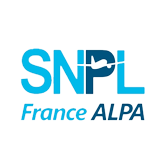
Safety Bulletin IFALPA: Space Weather Advisories
ICAO Annex 3, Chapter 9 provides detailed Standards and Recommended Practices for Meteorological information to be supplied to operators and flight crew members for preflight planning, inflight replanning, use by flight crew members before departure, and aircraft in flight.
ECA POSITION PAPER : Reduced crew ops concepts
ECA POSITION PAPER : Reduced crew ops concepts : The Human and the concepts of Extended Minimum Crew Operations (eMCO) and Single Pilot Operations (SiPO)
Position Paper IFALPA: Implementation of the Future of Air Traffic Operations
The IFALPA Future Air Traffic Operations (IFATO) document - Second Edition - is guidance material for representatives Member Associations to help bridge the current work program of the committees with projected future topics that will affect our technical work. It should reside between the current work in ICAO working groups and panels and the very high level 18POS03 - IFALPA Vision for the Future of Air Navigation and Weather Information document.
Position Paper IFALPA: Implementation of the Future of Air Traffic Operations
The IFALPA Future Air Traffic Operations (IFATO) document - Second Edition - is guidance material for representatives Member Associations to help bridge the current work program of the committees with projected future topics that will affect our technical work. It should reside between the current work in ICAO working groups and panels and the very high level 18POS03 - IFALPA Vision for the Future of Air Navigation and Weather Information document.
Position Paper IFALPA: The Dangers of Reduced Crew Operations
There are numerous risks associated with reduced-crew and single-pilot operations. Most prominently, these risks stem from the increased workload for the remaining pilot, the elimination of a critical layer of monitoring and cross-checking and operating redundancy on the flight deck, and compromising the safety and security beyond acceptable levels of risk given the many variable emergency situations that may occur during a flight.
Position Paper IFALPA: Safe Small Commercial Unmanned Aircraft Operating Rules
Advances in technology have resulted in the introduction of large numbers of small unmanned aircraft (UA), especially in populated areas. Commercial use is only expected to continue to expand. Many countries have adopted or are considering adoption of rules governing the operation of these new aircraft, also commonly referred to as unmanned aircraft systems (UAS), or “drones.”
Position Paper IFALPA: Geometric Altitude
With the increasing equipage of Global Navigation Satellite System (GNSS) in commercial air transports, and the growing constellation of GNSS, the future use of Geometric Altitude throughout the flight profile might be possible and will bring added benefits such as reduced vertical separation and complementing trajectory flight paths. Geometric Altitude might be introduced above 15,000 metres because all aircraft able to reach these levels are GNSS equipped, but biggest benefit is seen during approach and departure. IFALPA supports research into a possible future transition from Barometric Altitude to using Geometric Altitude for sub transition level en route, and approach operations.
Position Paper IFALPA: The Use of Satellite Voice Communications (SATVOICE) for Air Traffic Control Operations
The discussion of expanding Satellite Voice Communications (SATVOICE) into the realm of Direct Controller - Pilot Communications (DCPC) and as a sole source of Long Range Communications Systems (LRCS) is evolving. Many shortcomings have been identified and specifications for new system development needs to resolve these shortcomings before SATVOICE can be approved as a substitute means of communication. The limitations of current systems must be accounted for and the risks mitigated. The areas include Human Machine Interface (HMI), DCPC, ATC Vectoring, Call priorities, Satellite limitations, avionics limitations, flight plans, and Short Code implementation.
Safety Bulletin IFALPA: Unstable Approaches during Reduced Operations
Position Paper IFALPA: Training Considerations for Return to Operations
As operations begin to return to normal, there will be a need to safely re-establish compliance with the ICAO Standards as interpreted in each State's regulations. The resumption of operations presents many challenges including the requalification and training of pilots. IFALPA believes pilots returning to the line must be: Qualified, Proficient, and Confident.
